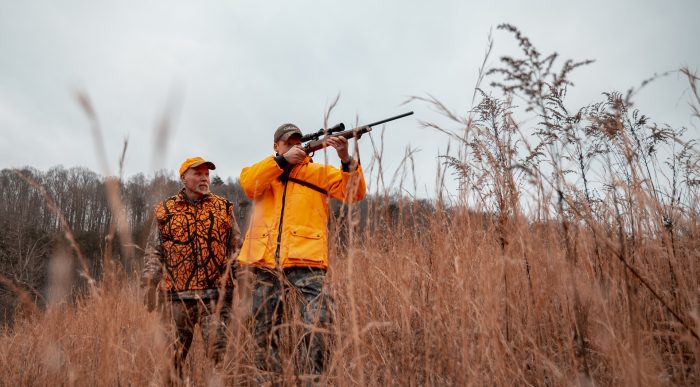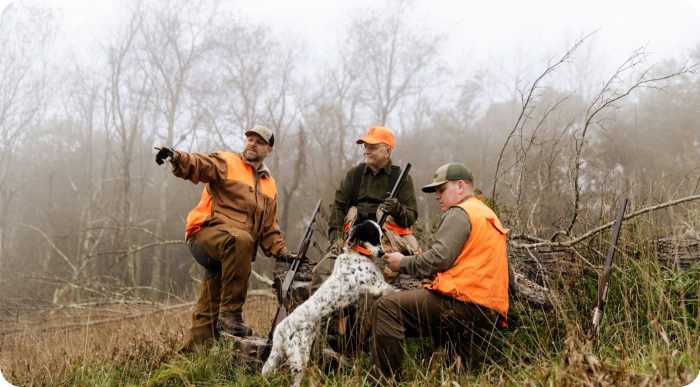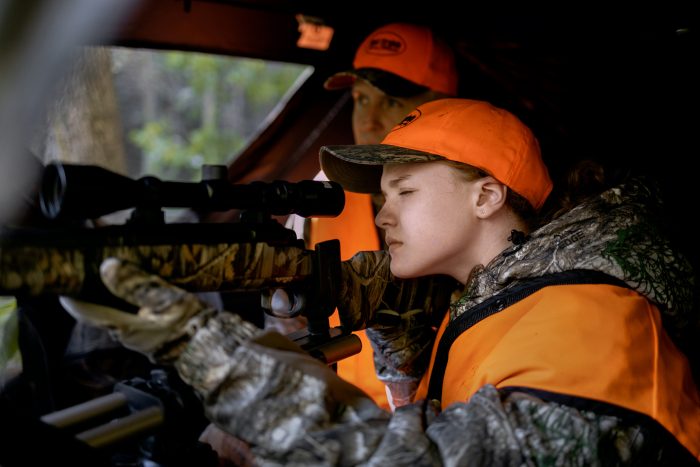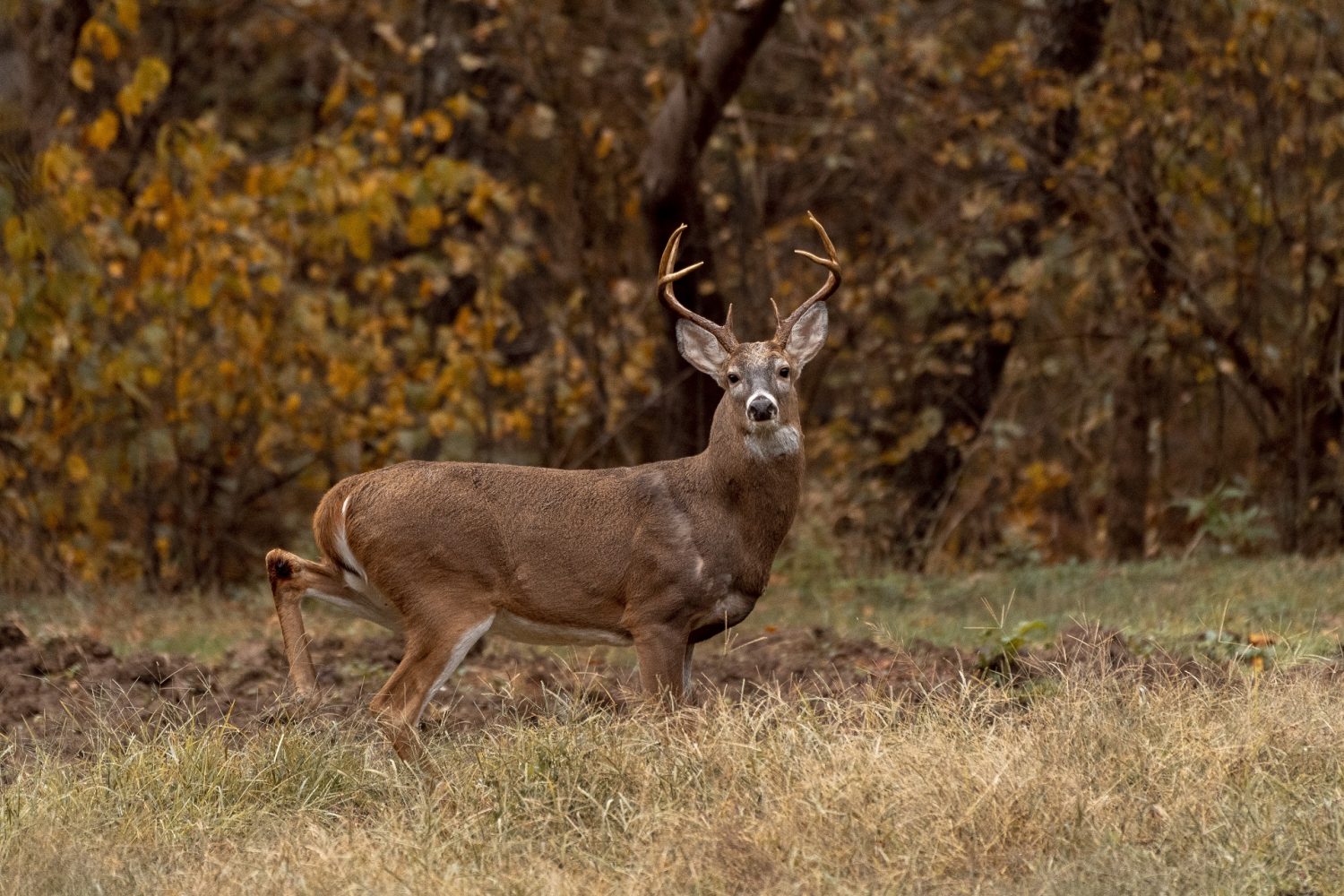West Virginia 2025-2026 Hunting Season Dates
For bag, possession and season limits, check page 2 in the West Virginia Hunting and Trapping Regulations Summary.
| Species | Opening Date | Closing Date | Daily Bag Limit | Possession Limit | Season Limit |
|---|---|---|---|---|---|
| *Wild Boar (Gun) Split Season | October 25 | November 1 | 1 | ||
| February 6 | February 8 | ||||
| *Wild Boar (Archery and Crossbow) Split Season | September 27 | December 31 | |||
| February 6 | February 8 | ||||
| *Deer (Buck Firearms) | November 24 | December 7 | See pages 15-20 | ||
| *Deer (Archery and Crossbow) | September 27 | December 31 | |||
| *Deer (Antlerless) Split Season (Selected Counties) | October 23 | October 26 | |||
| November 24 | December 7 | ||||
| December 11 | December 14 | ||||
| December 28 | December 31 | ||||
| *Deer (Muzzleloader) | December 15 | December 21 | |||
| *Deer (Youth/Class Q/Class XS) Split Season (See Page 29) | October 18 | October 19 | 1 | 4 | 4 |
| December 26 | December 27 | ||||
| *Deer, Bear and Turkey (Winter 2025 Mountaineer Heritage – See Page 35) | January 8 | January 11 | 1 Deer, 1 Bear, 1 Turkey | ||
| *Bear (Archery and Crossbow) | September 27 | December 31 | 1 | 2 | 2 |
| *Bear (Gun) (Selected Counties) | August 30 | September 7 | |||
| September 20 | September 26 | ||||
| October 4 | October 10 | ||||
| October 23 | October 26 | ||||
| November 24 | December 7 | ||||
| December 8 | December 31 | ||||
| *Bear (Youth/Class Q/Class XS) Split Season (See Page 38) | September 13 | September 14 | |||
| October 18 | October 19 | ||||
| *Turkey (Fall) Split Season (Selected Counties – See Page 44) | October 11 | October 19 | 1 | ||
| October 27 | November 2 | ||||
| October 27 | November 16 | ||||
| *Turkey (Spring 2025 – Bearded Only) | April 20 | May 24 | 1 | 2 | 2 |
| *Turkey (Spring 2025 – Youth Season – See Page 44) | April 18 | April 19 | |||
| Squirrel (Gray, Black, Albino and Fox) | September 13 | February 28 | 6 | 24 | None |
| Squirrel (Youth Season – see page 29) | September 6 | September 7 | 6 | 12 | 12 |
| Ruffed Grouse | October 18 | February 28 | 4 | 16 | None |
| Bobwhite Quail (Closed on Tomblin WMA) | November 1 | January 3 | 3 | 9 | None |
| Cottontail Rabbit | November 1 | February 28 | 5 | 20 | None |
| Snowshoe or Varying Hare | November 1 | February 28 | 2 | 8 | None |
| Ring-necked Pheasant (Cock Birds Only) | November 1 | January 3 | 2 | 2 | None |
| Ring-necked Pheasant (Hillcrest WMA – Cock Birds Only) | November 8 | December 6 | 1 | 1 | None |
| Raccoon (Hunting) The bag limit of 4 is for the 24-hour period of 6 a.m. to 6 a.m. | October 18 | February 28 | 4 | None | None |
| Raccoon (Trapping) | November 1 | February 28 | None | ||
| Red Fox, Gray Fox (Hunting and Trapping) | November 1 | February 28 | None | ||
| Red Fox, Gray Fox (Hunting – Night with Artificial Light/Night Vision Technology – See Page 3) | January 1 | February 28 | |||
| *Bobcat (Hunting and Trapping) | November 1 | February 28 | 3 | ||
| Mink, Muskrat (Trapping) | November 1 | February 28 | None | ||
| *Fisher (Trapping) | November 1 | January 31 | 1 | ||
| *Beaver (Trapping) | November 1 | March 31 | None | ||
| *Otter (Trapping) | November 1 | February 28 | 1 | ||
| Crow – Split Season Nuisance Crows: crows committing depredations upon ornamental or shade trees, agricultural crops, home gardens, livestock, or wildlife, or when concentrated so as to constitute a health hazard and or other nuisance may be killed at any time. | October 1 | November 22 | None | ||
| January 1 | March 7 | ||||
| **Coyote (Hunting) | Year-Round | None | |||
| Skunk, Opossum, Woodchuck, Weasel, English Sparrow, European Starling and Pigeon (Hunting) | Year-Round | None | |||
| Skunk, Opossum, Coyote, and Weasel (Trapping) | November 1 | February 28 | |||
| Elk, Song and Insectivorous Birds, Owls, Hawks, Falcons and Eagles | No Open Season | ||||
| Geese, Ducks, Mourning Doves, Gallinules, Rails, Woodcock and Common Snipe | Harvest Information Program (HIP) registration required. See West Virginia Migratory Bird Hunting Regulations. | ||||
| *Must Be Electronically Registered – See Page 4**Additional Regulations – See Page 8 | |||||
How West Virginia Hunting Season Dates Are Set
Regulated hunting is the most important tool for managing game mammals and birds. Hunting seasons are established, (i.e., season lengths, bag limits, sex of bird/mammal legal for harvest) based on sound scientific research and biology of the game species and to maximize recreational opportunities for hunters. Additionally, sociological parameters like nuisance bear complaints, deer damage and other issues are evaluated for managing game species as they relate to establishing hunting seasons.
In West Virginia, the Natural Resources Commission (NRC) is responsible for setting open seasons, season lengths, sex and bag limits. Season changes and recommendations from wildlife biologists and wildlife managers are presented to the WVDNR director for approval and are presented to the public for comments during the regulations public meetings held across the state each year. The annual season frameworks, bag limits, the public’s input from the regulations public meetings and other issues are presented to the NRC to be approved or rejected at their spring meeting (big-game seasons) and summer meeting (small-game seasons for the next year).
For specific hunting season dates, bag limits other information, download a copy of the current Hunting and Trapping Regulations Summary.







